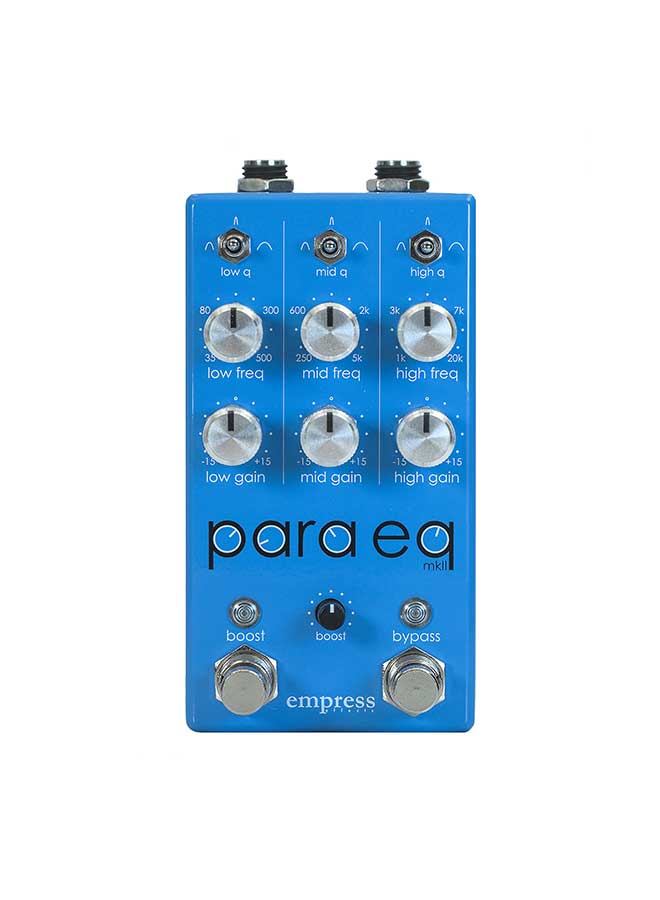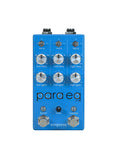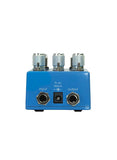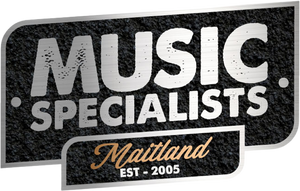





Empress Effects ParaEQ MKII Pedal
- $444.00
$494.00- $444.00
- Unit price
- per
This item is ready and waiting in our warehouse! Please call 02 4933 0633 to arrange in-store pickup, and we’ll have it transferred within 24 hours.
Authentic Customer Service
Proudly Australian Family Operated
Keeping Music in Maitland Since 2005
Your One-stop Instrument Experts
How to get the most out of your ParaEq
That Pedal Show Gives a Tutorial on EQ
Mick and Dan demonstrate how to sculpt your tone using a ParaEq MKII Deluxe.
Pedal Intro/High-Pass & Low-Pass
Watch as Aaron uses the high-pass and low-pass filters in his amp's effects loop to tighten up his heavy tone.
Lo-Fi Filter
Aaron dials in a lo-fi retro tone transition that’s often used pare down the signal so you have lots of impact when the band kicks back in.
Mimicking Overdrive
Aaron uses the parametric EQ to boost the front of his amp into overdrive, and then shape it further with changing up the frequency content the amp sees.
Mid-Forward Lead Tone
Aaron zones in on his ‘easy on the hands’ solo sound.
ParaEq on Synth
Aaron explores shaping the Moog Sub 37 with the ParaEq.
Why Choose Parametric EQ over Graphic EQ?

Graphic equalizers provide a convenient visual sense of the EQ curve. However, there is a tradeoff in transparency and precision.
The graph here shows the ParaEq MKII Deluxe (cyan) and a 7-band graphic EQ pedal (magenta) both providing a +4dB boost at around 2 kHz. As can be seen, the ParaEq is much more precise in the changes it can make, whereas the graphic EQ affects nearly the entire frequency spectrum. Furthermore, at around 10kHz the ParaEq is providing unity gain, whereas the graphic EQ is attenuating the signal by nearly 6dB. This makes the ParaEq a more transparent circuit than the graphic EQ.
This combination of transparency and precision is why recording studio control rooms are dominated by parametric equalizers, and why they’re a great choice for creative and corrective EQ on your pedalboard.
Which ParaEq Do You Need?
The original ParaEq has been loved and trusted by musicians on a variety of instruments for over a decade. Both the ParaEq MKII and the ParaEq MKII Deluxe feature a low-noise, transparent signal path that is extremely versatile.
With three fully parametric bands, you can simultaneously achieve broad tonal shaping and precise fine-tuning to sculpt your perfect sound.
The ParaEQ MKII Deluxe will appeal to players who:
- Need high-pass and low-pass filters for precision work at the frequency extremes
- Want the glorious sound of Baxandall filters for sparkling high end or extra weight in the low end
- Want to be prepared for any EQ situation
Controls at a Glance

Specifications
How are shipping costs determined?
Shipping costs are calculated during checkout based on weight, dimensions and destination of the items in the order. Payment for shipping will be collected with the purchase. This price will be the final price for shipping cost to the customer.
Do you post to PO Boxes?
In most instances we are unable to offer delivery to PO Boxes unless the item is small enough to send in a Australia Post satchel or Australia Post box.
I have placed an order but I have to change my delivery address, what can I do?
For change of delivery address requests, we are able to change the address at any time before the order has been dispatched. Please send us an email to sales@musicspecialists.com.au with your order number and the correct/new delivery address. Additional shipping charges may apply if the correct/new address varies greatly from the original address inputted at the time of the order.
When will my order be dispatched?
Orders are usually dispatched within 2 to 4 business days of payment of order.
Will I receive tracking information for my purchase?
For most orders, you will receive tracking information at the time of dispatch. Music and Tuition books may be sent via Australia Post without tracking.
How long will it take for me to receive my order?
In general, domestic shipments are in transit for 2 - 7 days - Be advised these times may exceed 7 days due to public holidays. Please note at times there may be some delays with freight and postage services once the order has been dispatched from our store or warehouse. These delays are out of the control of Music Specialists.
I have received my order, however it has been damaged in transit. What should I do?
If you find a parcel is damaged in-transit, if possible, please reject the parcel from the courier and get in touch with our store via email at sales@musicspecialists.com.au. If the parcel has been delivered without you being present, please contact us at sales@musicspecialists.com.au and include images of the damaged packaging and/or damaged items.
Related Products
- Choosing a selection results in a full page refresh.


